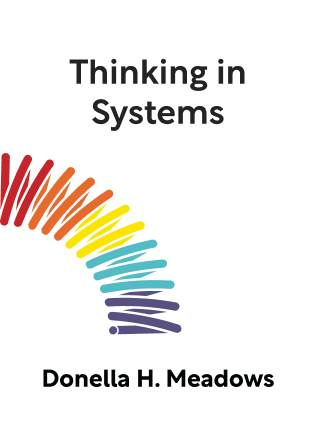

This article is an excerpt from the Shortform summary of "Thinking in Systems" by Donella H. Meadows. Shortform has the world's best summaries of books you should be reading.
Like this article? Sign up for a free trial here .
What is systems thinking in public health? How does systems thinking in public health work, and how can public health officials use thinking
Systems thinking in public health can help healthcare professionals plan and create responses to major health crises.
Read more about systems thinking in public health.
Systems Thinking in Public Health
While there are many examples of systems thinking in public health, addiction, and the public health reaction to addiction serves as clear example of how systems thinking in healthcare failed, and offers suggestions for how it can improve.
Addiction
Also known as: dependence, shifting the burden to the intervenor. Systems thinking in public health can help explain why addiction is so prevalent.
Systems Failure in Healthcare: How It Happens
An actor in a system has a problem. In isolation, the actor would need to solve the problem herself. However, a well-meaning intervenor gives the actor a helping hand, alleviating the problem with an intervention.
This in itself isn’t bad, but in addiction, the intervenor helps in such a way that it weakens the ability of the actor to solve the problem herself. Maybe the intervention stifles the development of the actor’s abilities, or it solves a surface-level symptom rather than the root problem. Temporarily, the problem seems to be solved, and everyone pats themselves on the back.
But soon enough, the problem appears again, and in an even more serious form, since the actor is now less capable of solving the problem. The intervenor has to step in and help again to a greater degree. Thus the reinforcing feedback loop is set up—more intervention is required, which in turn further weakens the actor’s ability to solve it, which in turn requires more intervention. Over time, the actor becomes totally dependent on—addicted to—the intervention. (This is why the systems term for this archetype is “shifting the burden to the intervenor.”)
A system addiction behaves similarly to a narcotic drug causing a physical addiction:
- Sensitization: Over time, more drug is needed to achieve the same effect.
- Withdrawal: If the drug is withheld, painful symptoms appear.
Examples of Addiction
Addictions occur when well-meaning interventions undermine the system’s ability to take care of itself. Here’s how systems thinking in healthcare would work:
- A farmer may try to increase his efficiency by planting a monoculture of a single crop and applying fertilizer to the soil, without developing a sustainable ecosystem. This makes the crop more susceptible to a blight. In response, the farmer applies more pesticides, which causes further destruction of the ecosystem and the ability of the field to maintain itself. Thus, more fertilizer and pesticides are needed.
- Elder care: families used to take care of their parents, until nursing homes and social security came along to relieve the burden. In response, people became dependent on these resources and became unable to care for their parents—they bought smaller homes and lost the skills and desire to care.
- A better healthcare system shifts the responsibility of personal healthcare away from the individual person and more toward the intervening doctor. (Shortform note: Imagine a world where a heart attack meant instant death. People would probably take better care of themselves. Once surgeries and stents are invented to rescue people from heart attacks, people feel less need to take care of themselves, which might in turn increase the rate of heart attacks. And as more heart attacks occur, more medical technology is developed to support them, and so on.) Systems thinking in public health can be improved.
- (Shortform example: A well-meaning parent may financially support her adult child, helping them get off their feet. However, this might weaken the child’s ability or desire to generate his own income, thus becoming even more dependent on financial assistance.)
Policies that cause addiction are deceptive—they are often well-meaning, seem like they solve the problem, and may have consequences that are hard to foresee (unless you map out the system).
Fixing Addiction
Like many of these system archetypes, the best solution is to avoid getting addicted, or causing addiction, in the first place. But if that doesn’t work, how can systems thinking in healthcare prevail?
When you intervene in a system:
- Try to first diagnose the root cause of the issue. Why is the system unable to take care of itself?
- Then design an intervention that will solve the root cause, and that won’t weaken the system’s ability to take care of itself.
- After you intervene, plan to remove yourself from the system promptly.
Once addiction takes hold, the only way to cure it is to remove the intervention and go through withdrawal. This can be done gradually or all at once, depending on how bad the withdrawal symptom is. It’s better to withdraw as early as possible—the longer you wait, the more painful withdrawal will be.

———End of Preview———
Like what you just read? Read the rest of the world's best summary of Donella H. Meadows's "Thinking in Systems" at Shortform .
Here's what you'll find in our full Thinking in Systems summary :
- How the world, from bathtub faucets to fish populations, can be seen as simple systems
- The key system traps that hold back progress, such as escalating arms races and policy addiction
- Why seeing the world as systems can give you superpowers in work and life






